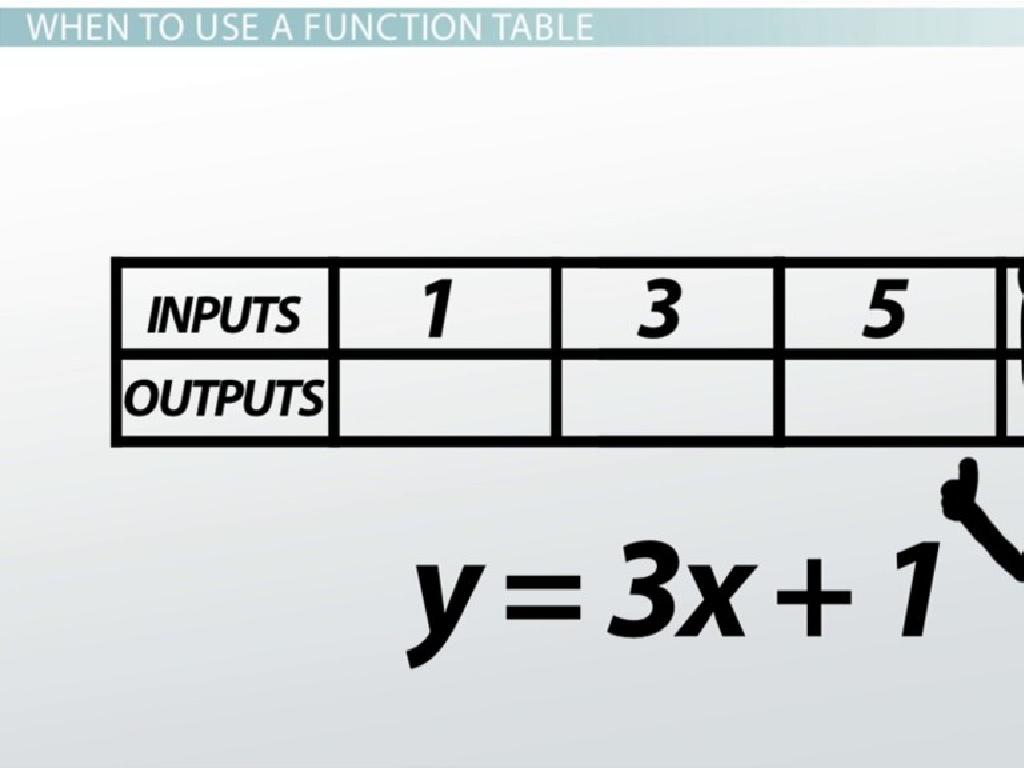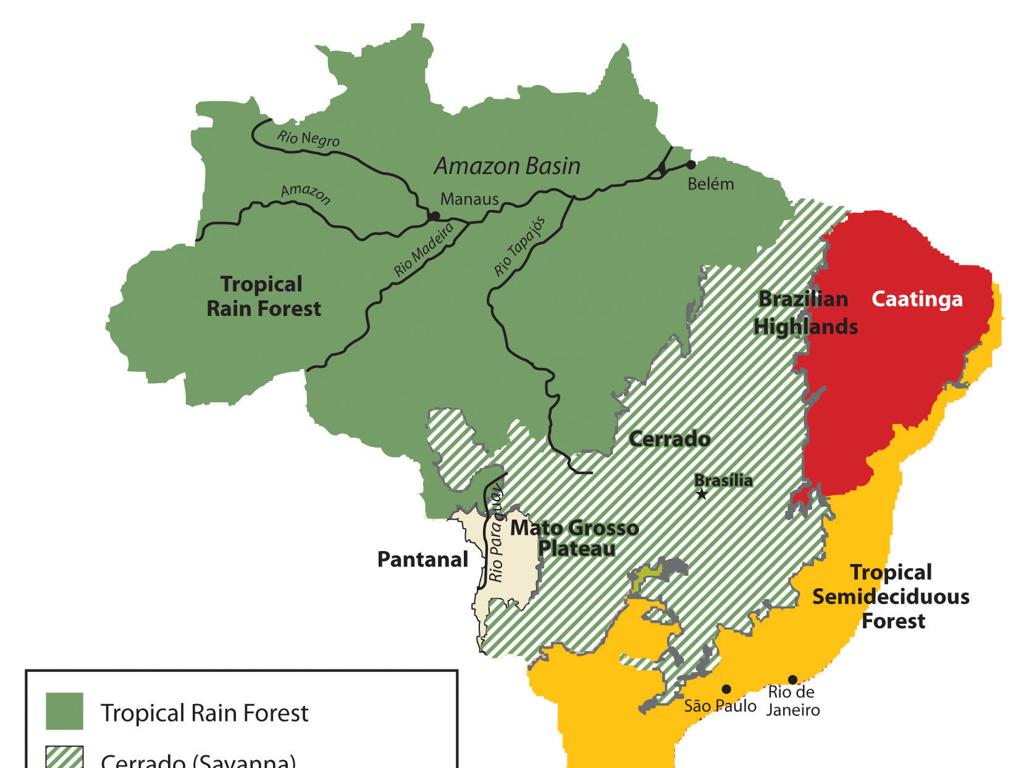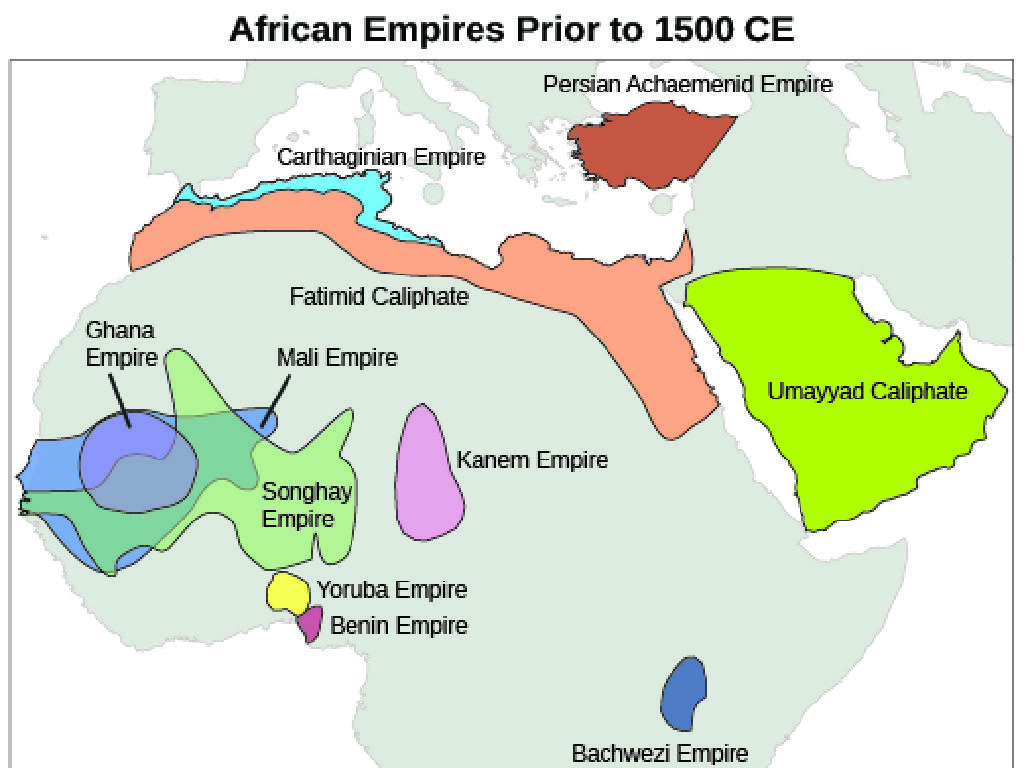Identify Trapezoids
Subject: Math
Grade: Fifth grade
Topic: Quadrilaterals
Please LOG IN to download the presentation. Access is available to registered users only.
View More Content
Identifying Trapezoids in Quadrilaterals
– What is a Quadrilateral?
– A shape with four sides and four angles.
– Trapezoids: A Special Type
– Trapezoids have one pair of parallel sides.
– Identifying Trapezoids
– Look for at least one pair of parallel sides.
– Comparing with Other Quadrilaterals
– How trapezoids differ from squares, rectangles, etc.
|
Begin the lesson by defining quadrilaterals to ensure students understand the basic characteristics of four-sided shapes. Then, introduce trapezoids as a special type of quadrilateral with only one pair of parallel sides, distinguishing them from other types like squares or rectangles that have two pairs of parallel sides. Use visual aids to help students identify trapezoids by looking for the unique property of having at least one pair of parallel sides. Encourage students to compare trapezoids with other quadrilaterals they have learned about to solidify their understanding of the differences and similarities among these shapes.
What is a Trapezoid?
– Definition of a trapezoid
– A quadrilateral with at least one pair of parallel sides
– Key characteristics
– Non-parallel sides are called legs; parallel sides are bases
– Comparing trapezoids
– Trapezoids have only one pair of parallel sides, unlike parallelograms
– Trapezoid vs. other quadrilaterals
– Understand how trapezoids differ from rectangles, squares, and rhombi
|
This slide introduces the concept of a trapezoid to fifth-grade students by defining it and explaining its unique properties. A trapezoid is a type of quadrilateral that is distinguished by having at least one pair of parallel sides. The non-parallel sides are referred to as legs, while the parallel sides are known as bases. It’s important to highlight the difference between trapezoids and other quadrilaterals like rectangles, squares, and rhombi, which have two pairs of parallel sides. Use diagrams to visually demonstrate these differences and encourage students to identify trapezoids in both geometric figures and in everyday objects around them.
Identifying Trapezoids
– Recognizing a trapezoid shape
– A trapezoid has one pair of parallel sides
– Real-world trapezoid examples
– Kite, table tops, some handbags
– Non-examples of trapezoids
– Squares, rectangles, and parallelograms are not trapezoids
– Classifying quadrilaterals
|
This slide aims to help students identify trapezoids by understanding their key characteristics. A trapezoid is a four-sided figure with at least one pair of parallel sides. Show examples of trapezoids that students might see in everyday life, such as kites or table tops, to make the concept relatable. It’s also crucial to distinguish trapezoids from other quadrilaterals like squares, rectangles, and parallelograms, which do not meet the criteria of having only one pair of parallel sides. Use this opportunity to reinforce the classification of quadrilaterals and how trapezoids fit into this larger group. Encourage students to bring in pictures or draw examples of trapezoids and non-trapezoids to enhance their understanding.
Properties of a Trapezoid
– One pair of parallel sides
– A trapezoid has two sides that are parallel to each other.
– Non-parallel sides are legs
– The other two sides that are not parallel are called legs.
– Angles inside a trapezoid
– The angles between the parallel and non-parallel sides.
– Sum of angles equals 360°
– Just like other quadrilaterals, the angles inside a trapezoid add up to 360 degrees.
|
This slide introduces students to the basic properties of a trapezoid, which is a type of quadrilateral. Emphasize that a trapezoid is unique because it only requires one pair of parallel sides, unlike other quadrilaterals that may have two pairs. The non-parallel sides are referred to as legs, which can be of different lengths. Discuss how the angles in a trapezoid are formed and how they relate to each other. It’s crucial to highlight that despite the differences in side lengths and angles, the sum of the interior angles in a trapezoid will always be 360 degrees. Use diagrams to illustrate these properties and provide examples of trapezoids in real life, such as certain table tops or bridges.
Types of Trapezoids
– Isosceles Trapezoid
– Two sides are the same length and angles are equal
– Right-Angled Trapezoid
– Has one right angle among its interior angles
– Scalene Trapezoid
– Non-equal sides and angles, no special rules
|
This slide introduces students to the different types of trapezoids, which are a special kind of quadrilateral. An isosceles trapezoid has a pair of opposite sides that are equal in length, and the angles at each base are equal. A right-angled trapezoid has one interior right angle. A scalene trapezoid has no equal sides or angles and does not follow any specific rules like the other types. Encourage students to draw each type and identify the properties that make each unique. Provide examples of each trapezoid type and ask students to classify them based on their properties. This will help solidify their understanding of the differences between each type of trapezoid.
Trapezoids in the Real World
– Spotting trapezoids around us
– Look at bridges, tables, or handbags
– Trapezoids in architecture
– Many buildings have trapezoidal shapes
– Trapezoids in everyday objects
– Find them in kites, books, and lampshades
– Practical uses of trapezoids
– Used in design for stability and aesthetics
|
This slide aims to help students recognize trapezoids in their environment, enhancing their understanding of geometry in a practical context. Encourage students to observe and identify trapezoidal shapes in everyday life, such as in the structure of bridges, the design of certain tables, or the shape of handbags. Highlight the significance of trapezoids in architecture, where they provide both aesthetic appeal and structural integrity. Discuss how trapezoids are present in common objects like kites, books, and lampshades. Explain that the unique properties of trapezoids make them useful in various design and engineering applications, from graphic design to construction. This real-world connection reinforces the relevance of geometry in daily life and stimulates students’ curiosity and engagement with the subject.
Let’s Practice: Identifying Trapezoids
– Identify trapezoids on your worksheet
– Look for quadrilaterals with one pair of parallel sides
– Classify trapezoids by properties
– Are the non-parallel sides equal? Is it an isosceles trapezoid?
– Group activity: find & draw trapezoids
– Work together to discover trapezoids in the classroom or outside
|
This slide is designed for a class activity to reinforce the concept of trapezoids. Students should use the worksheet provided to identify trapezoids among other quadrilaterals. They should pay attention to the defining property of trapezoids: one pair of parallel sides. Once identified, students should classify the trapezoids based on their properties, such as whether they have non-parallel sides of equal length, which would make them isosceles trapezoids. The group activity encourages collaboration and application of their knowledge by finding and drawing trapezoids from their surroundings. This could include finding objects in the classroom or schoolyard that resemble trapezoids. Teachers should circulate to provide guidance and ensure each student participates in the discussion and drawing process. Possible activities include drawing trapezoids on the board, creating trapezoid collages, or using string to create trapezoid shapes on their desks.
Class Activity: Trapezoid Hunt
– Search for trapezoid-shaped objects
– Discuss your decision process
– How did the sides and angles help you?
– Share your findings with the class
– Explain why you chose each object
– Reflect on the activity
– What did you learn about trapezoids?
|
This interactive activity is designed to help students apply their knowledge of trapezoids to real-world objects. Encourage students to look for objects that have at least one pair of parallel sides, which is a key characteristic of trapezoids. As they discuss their decision-making process, guide them to articulate how they used the properties of trapezoids to identify them. When sharing, students should explain their reasoning for each object they present. After the activity, lead a reflection session to reinforce their understanding and address any misconceptions. Possible variations of the activity could include drawing trapezoids, creating trapezoids with craft materials, or finding trapezoids in pictures or books.
Conclusion: Understanding Trapezoids
– Recap: A trapezoid’s definition
– A quadrilateral with at least one pair of parallel sides
– Key traits of trapezoids
– Non-parallel sides are called legs; parallel sides are bases
– The significance of trapezoids
– Recognizing trapezoids helps in geometry and real-life structures
– Applying trapezoid knowledge
– Use in construction, art, and problem-solving
|
As we wrap up our lesson on trapezoids, it’s important to revisit the definition and key characteristics that define this unique shape. A trapezoid is a type of quadrilateral that has at least one pair of parallel sides, which are known as the bases, while the non-parallel sides are referred to as the legs. Understanding trapezoids is crucial as it lays the foundation for more advanced geometric concepts and is applicable in various real-world contexts such as architecture, design, and engineering. Encourage students to identify trapezoids in their surroundings and consider their use in practical situations. This not only reinforces their learning but also demonstrates the relevance of geometry in everyday life. For the next class, students could bring in pictures or examples of trapezoids they find at home or outside, fostering an interactive and engaging learning environment.
Homework: Spot the Trapezoids!
– Find trapezoids around you
– Draw and label their properties
– Include bases, legs, and angles
– Three examples needed
– Share your findings in class
|
This homework assignment is designed to help students recognize trapezoids in the real world and understand their properties. Students should look for objects that have one pair of parallel sides, which is a key characteristic of trapezoids. They should draw these objects, labeling the long base, short base, non-parallel sides (legs), and the angles if possible. Encourage creativity in finding trapezoids, which could be in the form of a desk, a bookshelf, or even architectural elements. In the next class, students will have the opportunity to present their examples, fostering a discussion on how trapezoids are present in everyday objects and reinforcing their understanding of quadrilateral properties.






